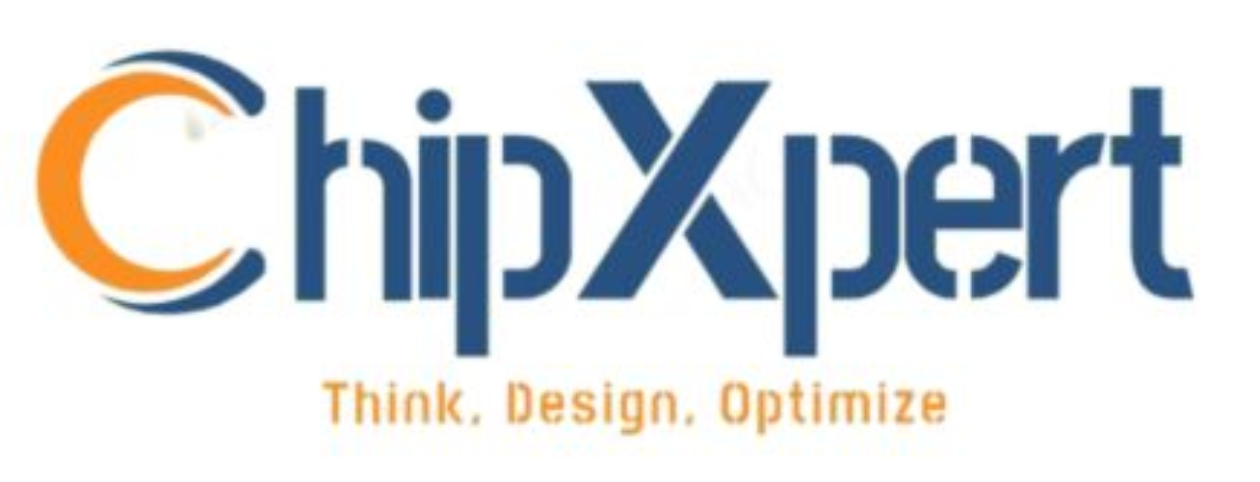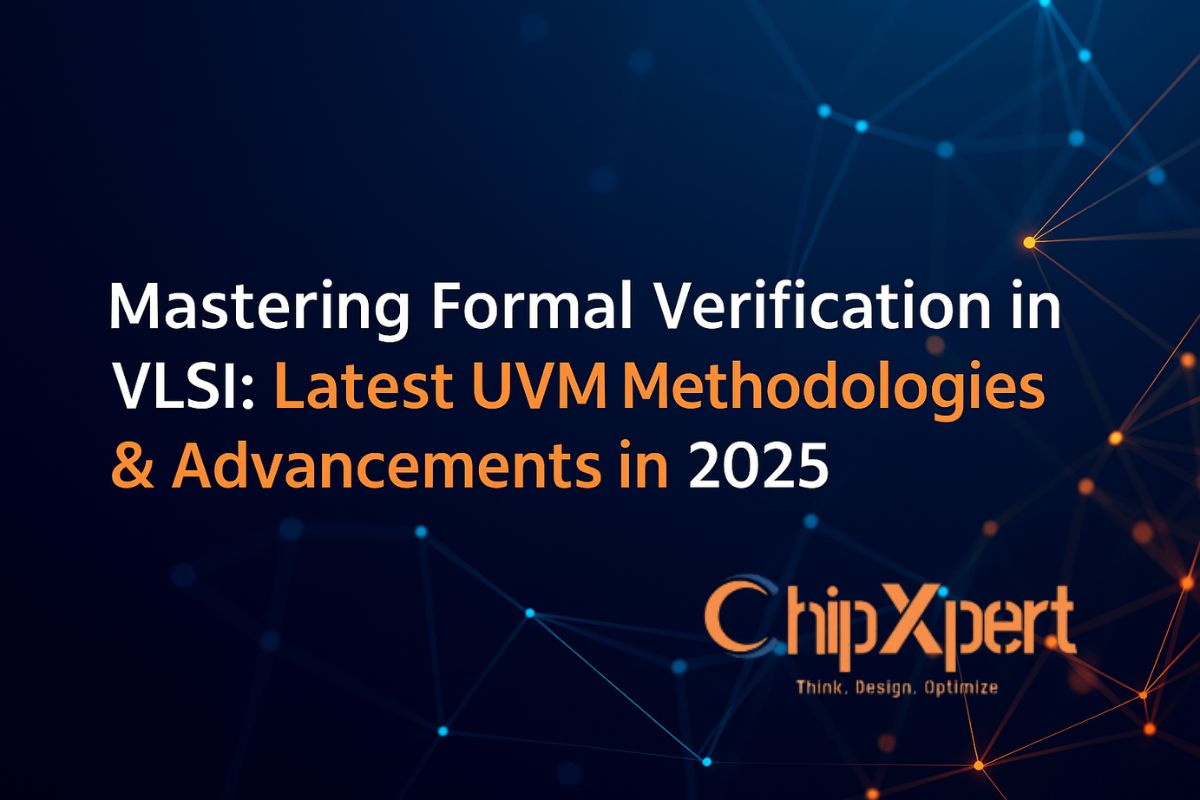Mastering Formal Verification in VLSI : Latest UVM Methodologies & Advancements in 2025
In the fast-paced world of semiconductor design, ensuring the reliability and functionality of complex integrated circuits is paramount. As chip designs grow in complexity, traditional testing methods alone are no longer sufficient to guarantee error-free performance. Enter formal verification and advancements in the Universal Verification Methodology (UVM), two powerful approaches that are revolutionizing how engineers validate hardware designs. This article explores the significance of formal verification, the latest advancements in UVM, and how these technologies are shaping the future of chip design.
What is Formal Verification?
Formal verification is a mathematical approach to proving that a design behaves exactly as intended under all possible conditions. Unlike simulation-based testing, which checks a design against a limited set of scenarios, formal verification uses rigorous algorithms to exhaustively analyze a system’s behavior. By modeling the design and its specifications mathematically, formal verification ensures there are no hidden bugs or corner-case errors that could lead to costly failures in production.
This method is particularly critical for safety-critical applications like automotive systems, aerospace, and medical devices, where even a single error can have catastrophic consequences. Formal verification tools, such as those from Synopsys, Cadence, and Siemens, leverage techniques like model checking and theorem proving to validate designs with unparalleled precision.
Why Formal Verification Matters
The complexity of modern chip designs, driven by the rise of AI, 5G, and IoT, demands robust verification methods. Here’s why formal verification is becoming indispensable:
- Comprehensive Coverage: Formal verification examines every possible state of a design, eliminating the risk of untested scenarios.
- Early Bug Detection: By catching errors during the design phase, formal verification reduces costly revisions later in the development cycle.
- Scalability: Advances in formal verification tools allow them to handle increasingly complex designs, from small IP blocks to entire system-on-chip (SoC) architectures.
- Regulatory Compliance: For industries like automotive (ISO 26262) and aerospace (DO-254), formal verification provides auditable proof of design correctness.
Advancements in Universal Verification Methodology (UVM)
While formal verification offers exhaustive analysis, simulation-based verification remains a cornerstone of hardware validation. The Universal Verification Methodology (UVM), built on SystemVerilog, is an industry-standard framework that streamlines simulation-based testing. UVM provides a structured, reusable approach to creating testbenches, enabling engineers to verify complex designs efficiently. Recent advancements in UVM are enhancing its capabilities, making it more powerful and accessible. Let’s explore some key developments:
1. Improved Reusability with UVM Components
Modern UVM frameworks emphasize reusable testbench components, allowing engineers to create modular, scalable verification environments. By leveraging standardized base classes and protocols, teams can reuse testbenches across multiple projects, reducing development time and costs. Recent updates to UVM libraries, such as those from Accellera, have introduced enhanced support for reusable sequences and configurations.
2. Integration with Formal Verification
One of the most exciting advancements is the convergence of UVM and formal verification. Hybrid approaches combine the strengths of both methods: UVM’s simulation-based testing for broad functional validation and formal verification for exhaustive analysis of critical modules. Tools like Synopsys VC Formal and Cadence JasperGold now integrate seamlessly with UVM testbenches, enabling engineers to apply formal methods to specific design blocks while maintaining simulation-based workflows.
3. Automation and AI-Driven Verification
AI and machine learning are transforming UVM workflows by automating repetitive tasks like test generation and coverage analysis. Advanced UVM environments now incorporate AI-driven tools that optimize test scenarios, identify coverage gaps, and prioritize critical test cases. This automation reduces manual effort and accelerates verification timelines, especially for complex SoCs.
4. Support for Emerging Standards
UVM is evolving to support new standards like RISC-V, PCIe 6.0, and DDR5. Recent advancements include pre-built UVM verification IP (VIP) for these standards, enabling engineers to quickly set up test environments for cutting-edge technologies. These VIPs include pre-verified components for protocols, interfaces, and memory controllers, streamlining the verification process.
5. Enhanced Debugging and Coverage Analysis
Debugging complex testbenches is a challenge in UVM-based verification. New tools and methodologies improve debugging by offering advanced visualization, transaction-level tracing, and real-time coverage feedback. These advancements help engineers pinpoint issues faster and achieve higher coverage goals, ensuring robust design validation.
Real-World Impact of Formal Verification and UVM
The synergy of formal verification and UVM advancements is transforming industries. Here are some examples of their impact:
- Automotive Systems: In autonomous vehicles, formal verification ensures the correctness of safety-critical components like ADAS controllers, while UVM validates system-level interactions under real-world conditions.
- AI and Machine Learning: AI chips with billions of transistors rely on formal verification to validate neural network accelerators and UVM to simulate complex data flows.
- 5G and Networking: UVM’s support for protocols like PCIe and Ethernet enables rapid verification of high-speed communication chips, while formal methods ensure error-free packet processing.
- Consumer Electronics: From smartphones to IoT devices, formal verification and UVM reduce time-to-market by catching bugs early and streamlining testing.
Challenges and Future Directions
Despite their benefits, formal verification and UVM face challenges. Formal verification can be computationally intensive, requiring significant expertise to set up models and constraints. UVM, while powerful, has a steep learning curve, and creating reusable testbenches demands careful planning. Additionally, integrating formal and simulation-based methods requires robust tool interoperability and skilled engineers.
Looking ahead, the future is bright. Advances in cloud computing are making formal verification more scalable, while AI-driven automation is simplifying UVM workflows. Standardization efforts, such as those from Accellera and IEEE, are improving interoperability between tools and methodologies. As chip designs grow more complex, the combination of formal verification and UVM will play a central role in ensuring reliability and performance.
How to Get Started with Formal Verification and UVM
Ready to explore formal verification and UVM? Here’s a roadmap to begin:
- Learn the Basics: Start with online resources or courses on SystemVerilog, UVM, and formal verification concepts. Platforms like ChipXpert offer beginner-friendly options.
- Experiment with Tools: Use tools like Synopsys VCS, Cadence Incisive, or Siemens Questa for UVM-based simulation, and explore formal tools like JasperGold or OneSpin.
- Join Communities: Engage with forums like Verification Academy or the Accellera UVM Working Group to learn best practices and stay updated on advancements.
- Start Small: Begin with simple projects, like verifying a small IP block, before tackling complex SoC designs.
Conclusion
Formal verification and UVM advancements are redefining hardware verification, enabling engineers to tackle the challenges of modern chip design with confidence. By combining the exhaustive analysis of formal methods with the flexibility of UVM-based simulation, these technologies ensure robust, error-free designs for everything from AI accelerators to autonomous vehicles. As tools and methodologies continue to evolve, formal verification and UVM will remain at the forefront of innovation, powering the next generation of semiconductors.



